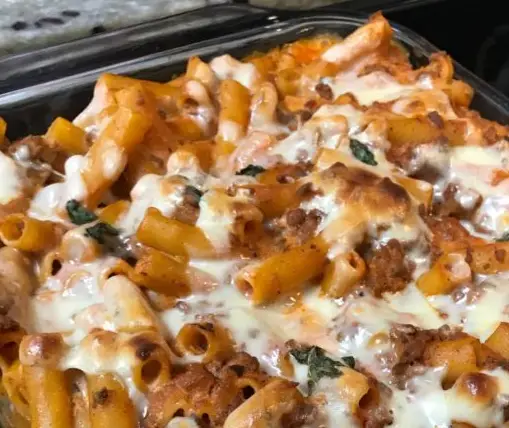Are you tired of store-bought mayonnaise with its long list of additives and preservatives? Why not try making your own homemade version? With just a few simple ingredients and a bit of patience, you can create a creamy and flavorful mayonnaise that will elevate any dish it touches. Say goodbye to bland and hello to delicious with this easy homemade mayonnaise recipe!
Ingredients:
- 1 large egg, at room temperature
- 1 tablespoon Dijon mustard
- 1 tablespoon white wine vinegar or lemon juice
- 1 cup neutral-flavored oil (such as canola or vegetable oil)
- Salt, to taste
- Optional: pinch of sugar or honey for sweetness
Instructions:
- Prepare Your Ingredients: Ensure that the egg is at room temperature. This is crucial for the emulsification process, which is the key to achieving a smooth and creamy mayonnaise.
- Combine Egg and Mustard: In a food processor or blender, combine the egg and Dijon mustard. Blend on low speed until the mixture is smooth and well-combined. This creates the base for your mayonnaise.
- Add the Acid: Add the white wine vinegar or lemon juice to the egg mixture. Blend again briefly to combine. The acidity helps stabilize the emulsion and adds a tangy flavor to the mayonnaise.
- Emulsify Slowly: With the motor running on low speed, begin to add the oil very slowly in a thin, steady stream. This step is critical; adding the oil too quickly can cause the mayonnaise to break. As the oil incorporates, you will see the mixture begin to thicken.
- Adjust Consistency and Flavor: Once all the oil is incorporated and the mayonnaise has thickened to your desired consistency, stop the blender or food processor. Taste the mayonnaise and add salt to taste. If you prefer a slightly sweeter mayonnaise, add a pinch of sugar or honey and blend again briefly to combine.
- Store and Chill: Transfer the homemade mayonnaise to a clean jar or airtight container. Refrigerate for at least 30 minutes before using. This allows the flavors to meld and the mayonnaise to thicken further.
- Serve: Use your homemade mayonnaise as a spread, dip, or dressing for your favorite sandwiches, salads, and more!
Cook’s Notes:
- Room Temperature Eggs: It’s important to use room temperature eggs for this recipe as they will emulsify more easily, resulting in a smoother mayonnaise. To quickly bring eggs to room temperature, place them in a bowl of warm water for a few minutes.
- Customize Your Flavor: Feel free to customize your homemade mayonnaise by adding minced garlic, fresh herbs, or spices for extra flavor. Some popular additions include garlic for aioli, chopped fresh herbs like dill or parsley, or a splash of hot sauce for a spicy kick.
- Consistency Adjustments: If your mayonnaise is too thick, you can thin it out with a small amount of water or additional vinegar/lemon juice. If it’s too thin, you can blend in a bit more oil until it reaches the desired consistency.
Variations:
- Olive Oil Mayonnaise: For a richer flavor, you can substitute some or all of the neutral-flavored oil with extra virgin olive oil. Keep in mind that this will impart a stronger olive oil flavor to the mayonnaise.
- Herb Mayonnaise: Add finely chopped fresh herbs like parsley, chives, dill, or basil to the mayonnaise for a burst of fresh flavor.
- Garlic Aioli: Incorporate minced garlic or garlic paste into the mayonnaise for a garlicky aioli that pairs perfectly with seafood, fries, and roasted vegetables.
- Spicy Mayonnaise: Stir in a few drops of hot sauce, Sriracha, or a pinch of cayenne pepper to give your mayonnaise a spicy kick.
Keto Version:
For those following a keto diet, homemade mayonnaise is an excellent option as it is high in healthy fats and contains no added sugars. Use avocado oil or a blend of avocado oil and olive oil for a keto-friendly variation that adds a subtle, rich flavor.
Low-Carb Version:
This homemade mayonnaise recipe is naturally low in carbs, making it suitable for low-carb diets. Ensure you use a keto-approved sweetener like stevia or erythritol if you opt to add a touch of sweetness.
Frequently Asked Questions (FAQs):
- How long will homemade mayonnaise last in the refrigerator? Homemade mayonnaise will typically last for about one week when stored in an airtight container in the refrigerator. Always discard if you notice any off odors or changes in texture.
- Can I use a different type of oil for homemade mayonnaise? Yes, you can use a variety of oils for homemade mayonnaise, but it’s best to choose a neutral-flavored oil with a high smoke point, such as canola, vegetable, or sunflower oil. Extra virgin olive oil or avocado oil can also be used for a different flavor profile.
- Why did my homemade mayonnaise break or not thicken? Homemade mayonnaise can break or fail to thicken if the oil is added too quickly or if the eggs and oil are not at the same temperature. To prevent this, add the oil slowly and ensure that all ingredients are at room temperature. If your mayonnaise does break, you can try fixing it by adding a teaspoon of boiling water and whisking vigorously.
- Can I make this mayonnaise without a food processor or blender? Yes, you can make mayonnaise by hand using a whisk. It’s a bit more labor-intensive but certainly doable. Simply whisk the egg, mustard, and vinegar together in a bowl, and then slowly add the oil while whisking continuously until the mixture emulsifies and thickens.
- Is it safe to use raw eggs in homemade mayonnaise? Using raw eggs always carries a risk of salmonella. To reduce this risk, use pasteurized eggs or very fresh eggs. Pregnant women, young children, the elderly, and those with weakened immune systems should avoid consuming raw or undercooked eggs.
In conclusion, mastering the art of homemade mayonnaise is simpler than you may think! With just a handful of pantry staples and a bit of patience, you can create a creamy and flavorful mayonnaise that will take your dishes to the next level. Whether you’re spreading it on sandwiches, dipping fries, or dressing salads, this homemade mayonnaise is sure to become a staple in your kitchen. So, ditch the store-bought stuff and give this easy recipe a try—you won’t be disappointed!
Here’s to enjoying the creamy goodness of homemade mayonnaise in all your culinary creations. Happy cooking and bon appétit!
That wraps up our guide to making easy homemade mayonnaise. Enjoy every creamy, delicious bite!






